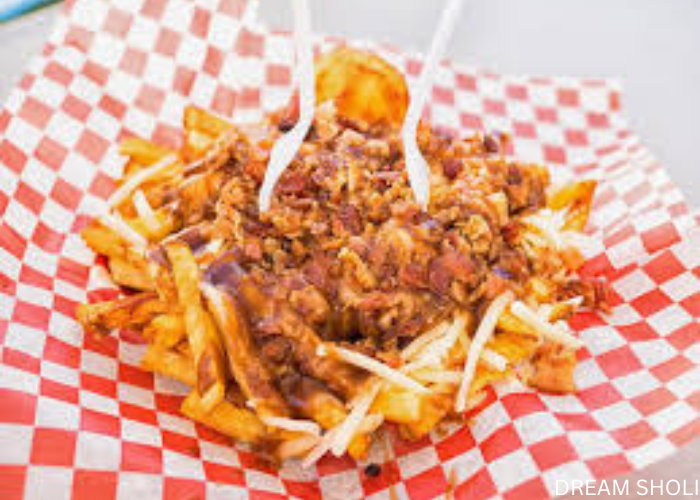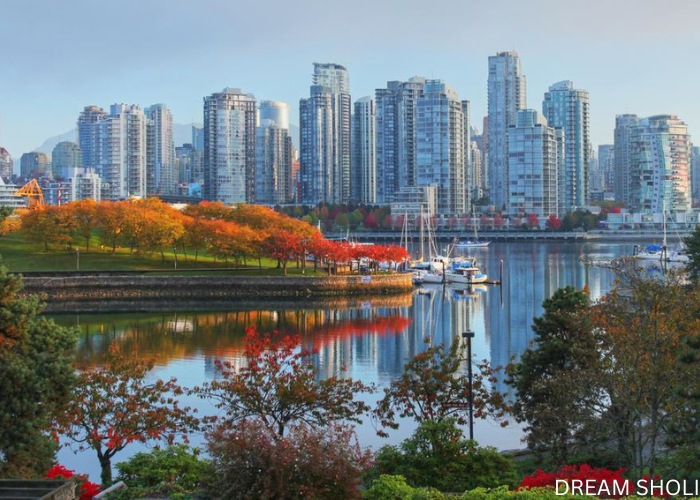
Canada, a vast and breathtakingly diverse country in North America, is celebrated for its remarkable natural beauty, multicultural heritage, and high standard of living. Stretching from the Atlantic Ocean in the east to the Pacific in the west and reaching up to the Arctic, Canada’s varied landscapes include iconic natural wonders like the towering Rocky Mountains, the thundering Niagara Falls, and the pristine wilderness of Banff National Park. As a country with two official languages, English and French, Canada’s cultural fabric reflects a unique blend of Indigenous, British, and French heritage, enriched further by contributions from immigrant communities worldwide. Known for its warm and welcoming people, Canada’s reputation for politeness and inclusivity is well-earned. Its cities offer a dynamic mix of cultural experiences; Toronto, Vancouver, and Montreal are renowned as vibrant, multicultural hubs with thriving arts scenes, diverse cuisine, and bustling urban life. Canada’s culinary traditions are as varied as its landscapes, featuring dishes like poutine (crispy fries topped with cheese curds and gravy), sweet butter tarts, and the layered delight of Nanaimo bars. Outdoor enthusiasts find a paradise in Canada, with endless opportunities for adventure. From skiing in Whistler, hiking the rugged terrain of national parks, to camping under expansive night skies, Canada’s natural beauty invites exploration year-round. The country is widely recognized for its high quality of life, with an excellent healthcare system and strong social services. Often ranked among the best countries globally for its safety, healthcare, and overall liveability, Canada appeals not only to residents but to travelers from around the world. Whether you’re drawn to Canada for its landscapes, cultural diversity, or the genuine hospitality of its people, the country promises a unique experience that combines stunning nature with rich cultural offerings and inclusive communities.
Canada experiences a wide range of climates, largely due to its vast geography and diverse regions. The country has four main seasons: winter, spring, summer, and fall, each bringing distinct weather patterns. Winter, typically from December to February, can be especially cold and snowy, with temperatures often dropping below freezing in the northern territories and prairie provinces like Alberta, Saskatchewan, and Manitoba. In areas like Quebec and Ontario, winters can be harsh but offer picturesque snowy landscapes and plenty of opportunities for winter sports. Coastal regions like Vancouver and Victoria, however, have milder winters with more rain than snow, making them more temperate compared to inland provinces. Summers in Canada, generally from June to August, vary in intensity depending on the region. Central and eastern areas, including Ontario and parts of Quebec, can become quite warm and humid, with temperatures frequently reaching 25-30°C (77-86°F). British Columbia, particularly along the coast, enjoys more moderate and comfortable summer temperatures, often paired with refreshing sea breezes. In contrast, the northern territories have cooler and shorter summers, but these months bring long daylight hours, allowing residents and tourists alike to enjoy Canada’s vast landscapes, from lush forests to sparkling lakes and rivers. Spring and fall are transitional seasons and bring milder temperatures along with the natural beauty of changing landscapes. Spring, from March to May, is a season of renewal, with flowers blooming and wildlife becoming more active after the winter. Fall, especially in eastern Canada, is famous for its vibrant foliage, with reds, oranges, and yellows creating picturesque scenes in provinces like Ontario and Quebec. Both seasons can be unpredictable, with fluctuating temperatures, but they are ideal for experiencing Canada’s natural beauty, often with fewer crowds than the peak summer and winter seasons.

Canada’s culinary landscape is a rich and dynamic reflection of its multicultural heritage, shaped by Indigenous traditions, European influences, and diverse immigrant communities. Canadian cuisine offers a variety of iconic dishes that highlight its unique blend of flavors and traditions. Among these is poutine, a comforting dish of crispy fries topped with cheese curds and smothered in savory gravy, originating in Quebec but beloved across the country. Butter tarts are another classic Canadian treat, featuring a flaky pastry shell filled with a buttery, sugary filling, often with raisins or nuts, offering a taste of nostalgic sweetness. Nanaimo bars, a layered dessert originating from British Columbia, combine a base of chocolate and coconut, a creamy custard filling, and a rich chocolate topping—a treat that has become a national favourite.
Beyond its signature dishes, Canada’s food scene is enriched by global influences, with flavors from countries around the world integrated into the local palate. Indigenous ingredients like maple syrup, wild berries, game meats, and wild rice remain foundational in Canadian cuisine, while contributions from immigrant communities have introduced exciting flavors and dishes. Across cities like Toronto, Vancouver, and Montreal, you can experience international flavors—from Chinese dim sum and Indian curries to Middle Eastern shawarma and Italian pasta—demonstrating the diverse cultural makeup of the country. Canada’s multiculturalism is also celebrated through its festivals, arts, and music, with events like Toronto’s Caribana Festival, the Calgary Stampede, and Montreal’s Jazz Festival bringing together people of all backgrounds. These events highlight a vibrant fusion of traditions, with performances, art exhibits, and culinary showcases that pay homage to both Canadian heritage and global cultures. This cultural diversity is woven into the fabric of Canadian identity, making the country an engaging and culturally enriching destination for travelers and locals alike, who can experience a blend of heritage and innovation in every corner.


Toronto, Canada’s largest city, is a vibrant and dynamic metropolis with a rich blend of neighborhoods, each offering its own unique character and appeal. Queen Street West is known for its trendy boutiques, chic cafes, and art galleries, creating a hub for creatives and shoppers alike. Meanwhile, Kensington Market offers a distinctly multicultural experience with an eclectic mix of global food stalls, vintage shops, and diverse street art, making it a favorite spot for locals and visitors wanting to experience Toronto’s cultural diversity. The Distillery District, with its historic cobblestone streets and beautifully preserved Victorian architecture, provides a charming setting for art galleries, breweries, and boutique stores, giving visitors a glimpse into Toronto’s history and modern-day creativity. Food lovers will find a paradise in Toronto, as the city boasts an impressive array of dining options influenced by the many cultures represented here. From world-class restaurants offering international cuisines to local eateries serving Canadian favorites, the city’s food scene caters to every palate. Foodies can enjoy everything from authentic dim sum in Chinatown and rich Italian dishes in Little Italy to vibrant Indian flavors in Little India. In addition, the city’s waterfront along Lake Ontario offers stunning views, and visitors can enjoy relaxing promenades, parks, and recreational activities, providing a tranquil contrast to the city’s bustling streets. Toronto’s main air gateway, Pearson International Airport—officially known as Lester B. Pearson International Airport—is one of the busiest and largest airports in Canada. Located approximately 22.5 kilometers northwest of downtown, Pearson Airport serves as a major hub for both domestic and international flights, connecting Toronto with cities worldwide. The airport is equipped with multiple terminals and offers a wide array of traveler amenities, including shopping, dining options, and comfortable lounges. Well-connected to downtown Toronto via highways and public transit, Pearson Airport is easily accessible, making it a convenient entry point for visitors eager to explore the city’s many attractions and lively neighborhoods.


Vancouver, located on Canada’s west coast in British Columbia, is a lively and picturesque city celebrated for its natural beauty, multicultural atmosphere, and abundance of outdoor activities. Framed by the Pacific Ocean and the majestic Coast Mountains, Vancouver offers stunning views and an ideal environment for outdoor enthusiasts. Visitors can enjoy a range of activities from skiing and snowboarding in nearby mountains to kayaking, paddleboarding, and other water sports in the surrounding waters. Iconic spots like Stanley Park, a vast urban oasis with trails, gardens, and the scenic seawall, provide endless opportunities for relaxation and exploration. Another must-see is Granville Island, known for its bustling markets, artisan shops, and unique dining experiences. Vancouver’s food scene reflects the city’s diverse cultural fabric, offering a rich blend of international cuisines, from fresh Pacific Northwest seafood to authentic Asian fare in neighborhoods like Richmond and Chinatown. The city’s vibrant culinary landscape includes everything from casual street food to award-winning fine dining, catering to all tastes and preferences. With its creative food trucks, lively markets, and renowned restaurants, Vancouver has firmly established itself as a top destination for food lovers. Vancouver International Airport (YVR) serves as the main gateway to the city and the wider region of British Columbia. Located in the city of Richmond, about 12 kilometers from downtown Vancouver, YVR is Canada’s second busiest airport, known for its efficiency, modern amenities, and welcoming atmosphere. The airport features multiple terminals with a variety of services, from shopping and dining options to lounges and relaxation areas, catering to both domestic and international travelers
Montreal is a captivating city that beautifully blends historic charm with a modern, lively atmosphere. A visit to Mount Royal offers breathtaking views of the cityscape, while Old Montreal invites you to stroll along its cobblestone streets lined with centuries-old architecture, capturing the essence of Montreal’s rich heritage. For art enthusiasts, the Montreal Museum of Fine Arts is a must-see, showcasing an impressive collection of artwork spanning various periods and styles. Montreal is also celebrated for its vibrant culinary scene, so be sure to sample local favorites like poutine and Montreal-style bagels during your stay.
Montreal-Pierre Elliott Trudeau International Airport, commonly referred to as YUL, is the primary airport serving the city of Montreal, Quebec. Located approximately 20 kilometers from downtown, YUL is a well-equipped, modern airport with multiple terminals offering a wide range of services to ensure a comfortable travel experience. The airport features a variety of dining options, retail stores, and traveler amenities to meet the needs of all passengers. YUL is well-connected to the heart of Montreal through roadways and public transportation, making it easy for visitors to access the city’s attractions. As a key hub for both domestic and international flights, Montreal Airport provides convenient access to destinations within Canada and around the world


Explore the world effortlessly with our tailored travel packages. Let us handle the details while you create unforgettable memories.
Copyright 2024 Dream Sholi